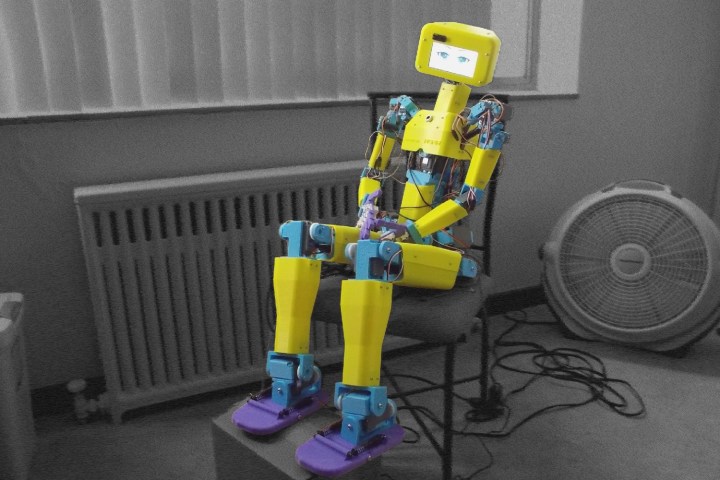
“ASPIR’s spiritual successor is Halley, the Ambassador Robot 001,” John Choi, founder of education robotics company Choitek and a former computer science and arts student at Carnegie Mellon University, told Digital Trends. “Created with the generous support of the Frank-Ratchye Studio for Creative Inquiry at Carnegie Mellon University in 2015, Halley was originally built to be a robotic student that could go to class so I wouldn’t have to. Now that I have graduated, ASPIR’s role is to aid me as a robotic teaching assistant with my educational technology company, Choitek. We are currently doing research to see how humanoid robots like ASPIR can be used to inspire more girls into STEM (the science, technology, engineering, and mathematics fields).”

To build ASPIR, you’ll need a large-volume 3D printer with a minimum build plate size of 10 x 10 x 10 inches, such as the Lulzbot TAZ 6. While all of the instructions are freely available, Choi makes clear that this is “definitely not a beginner project,” and recommends that anyone giving it a go has significant prior 3D printing experience. (For more basic robot kit projects, check out our roundup here.) Still, if you fit that bill — and have 300 hours of 3D printing time to invest — this could be an immensely satisfying project to take on. “[This was designed for] students, artists, teachers, hobbyists, researchers, and anyone else who wants to challenge themselves with the next level of mega 3D-printing projects,” Choi continued.
At present, there’s not a whole lot of functionality for the robot, although that could definitely change in the future. Since the project is open-source, there’s also plenty of opportunity for others to get involved and start working out what ASPIR could be used for.
After all, having spent 300 hours putting it together, the least it could do to repay you is work out how to pick up the socks on your floor!


